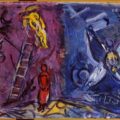Text Within the Text: Rachel Blau DuPlessis
So
I dismantled it.
Mounted it and then dismantled it
but its uncanniness
its Nessie in Loch Ness-ness
lurks and snuffles and sways.—Rachel Blau DuPlessis, Ledger 1
Rachel Blau DuPlessis’ twenty-six–year-long project, Drafts, a sequence of interconnected poems, is composed according to a numerically determined grid. It is an immense meta-poem, assembled whilst simultaneously and self-consciously examining the process of its making and its context. Via fragments, dialogue, sampling, and repetition, the neo-cantos comprising Drafts incorporate and rewrite (or re-inscribe) the impurities of memory—“a disorder of memory is memory itself”—perception, and the ramifications of ideological liberation and oppression. This complex critical poem détournes the lyric as it correlates and networks the jumbled connections of language with the world in general. The final part of this invaluable poetic artifact was achieved with the publication of Surge: Drafts 96-114 in 2013.
After completing, or really open-ending, Drafts, DuPlessis continued its task of examining the consequences of loss in a series of twenty-six Letters and Ledgers in her new collection, Interstices. Interstitial thinking, so essential to the making of poems, is documented, unravelled, and intrepidly followed by DuPlessis through the “lurks and snuffles and sways” of its elusive process. “Thinking emerges in a real body,” she writes, “…in its secret room/ the secret space: it is the space, the secret/ of the past, but also of/ possibility, webby/and dangerous.”
Interstices, as they’re conceptualized in Rachel Blau DuPlessis’ work, can be conceived as the spaces drawn by a grid. The interstitial area is not formless. Rather, it exists as an active unspoken space. A space that’s not empty but is also the space of the unknown. It is potential. It is the zone of the next move—not what’s already appeared but what might happen between words and images. It is where things, interpretations, language, and possibilities can be made present in a poem. An interstice is like the night sky between the stars, and as another poet, Rachel Loden, observes, “Something is being said at each interstice.”
The Letters of Interstices address both the living and the dead. They lend the poet a way of revisiting many years spent on the production of critical work, on teaching and editing, and on making the long poems, as well as a way of weighing up the inevitabilities of temporality. The letters, although substantially metaphysical, are also full of compassion and mindful of mortality. One of the lines of enquiry could be “How much does anything that can be said have meaning when the demands of time will undermine any fanciful posture or authority?”
What aphorism is worth
chiselling elegantly into granite—
given that everything said is blown seeds.
Those “blown seeds” mark a sardonic turn toward a continuum of optimism. Although there is this reminiscently Steinian statement—“Talking in paradoxes is actually deeply emotional”—the Ledgers are occasionally blunt about language’s limited epitome of time’s effect:
even given the
devastating
consideration:
that words are waste.They fail precisely
at the exact point
one needs discussed.
For they cannot encompass
time
and awe
and silence and loss
Further along, there are several literally-embodied grapplings:
Illness, treatment, sadness, care.
…
Has a mournful sense of time become a cul de sac?
…
Insult to injury:
On top of leukemia, a fungus, a patch of mildew, thrush.
Here the interstices are a “splintered apparatus. Babel left in rubble, / a map of seams as large as the remains.” These Letters and Ledgers prod the gaps and poke at any illuminated slivers as if the meaning or wry solution were possible even within the complications of “the remains”:
We tried to mean
what we tried to say.But it’s the language itself
that complicates.
So actually, the thing is
always to be outrageous,
ferocious, degenerate,
and indebted.
Rachel Blau DuPlessis’ practice is all of the above as she turns poetic language inside out, examines it forensically, and then empathetically threads it together again to recreate and connect the remnants of whatever the process reveals:
Something about folding
(what over what?) that says
implicate, explicate, pleat,
complicate.
At this stage of the Letters, the complications eschew embellishment:
Forget metaphor.
Forget that fancy shit.
Later, the rejection becomes more tempered, more skeptical of metaphor, also of memory:
“Memory” he said
“is returned to the people who come
looking for it.” Maybe.
It also becomes skeptical of politesse:
and what to say when you’re trying to be nice
that sweet-faced phatic stuff one never knows—
all of which recalls
our tongue-tied struggles,
with speaking and with it.(In this stanza “it” represents “The whole language”.)
There is a tremendous amount of play—for instance, a poem in couplets begins with “OMG.”—a quality typical of DuPlessis, as well as ample ambiguity and linguistic experimentation. Still, there are suggestions of a “Plan,” even within unanticipated interstices:
Plan: Here could write between the lines
the things unsaid. A text within the text.
Does Interstices exist as the “text within the text” of Drafts? Towards the end of the series there is a surge of energy as the prospective “Plan” reappears in a quick and heady Ledger that seems desirous of an event as radical as the arrival of, say, a poetic “Utopia” or some other (im)possible upheaval:
Something that unfixed alphabets,
turning ABC’s
to numbers, then decoded
other, further
secret words
to be read hungrily
by waxen flickering light—
these are hid within the plan.
Then, as if hesitant to offer thesis without its dialectical opposition, the text raises doubts that there ever was a “plan,” or any content for which a plan would be needed:
…“Was there a plan?”
“For what?” He said. “The way you set things
up, before the ‘chance operations’ is everything”
Much of the pleasure in reading these poems is not only their philosophical ruminations, their fearless yet vulnerable investigations into the complex modus operandi of writing poetry and into the contingencies of time, but also the remarkably unpredictable possibilities that they allow language. The poems stand in dialogue with friends, concepts, and conundrums. In this way, they are generous and inclusive:
And while we are still talking,
while I be seeking instruction still,
just please tell me everything you know.
I’d very much like to make the same request of the unquestionably erudite and uniquely explorative Rachel Blau DuPlessis.
About Pam Brown
Pam Brown was born in Victoria, Australia. She grew up on military bases in Queensland and has spent her adult life living and working in Sydney. Since 1971 she has published seventeen books, ten chapbooks, and an e-book. Most recently, Home by Dark was published by Shearsman Books in 2013. Pam has been an editor for Overland, Jacket, and Jacket2, and is now a contributing editor for Fulcrum and VLAK. Currently, she is editing ten booklets for Vagabond Press—the deciBels series—due to appear in print in November this year.






